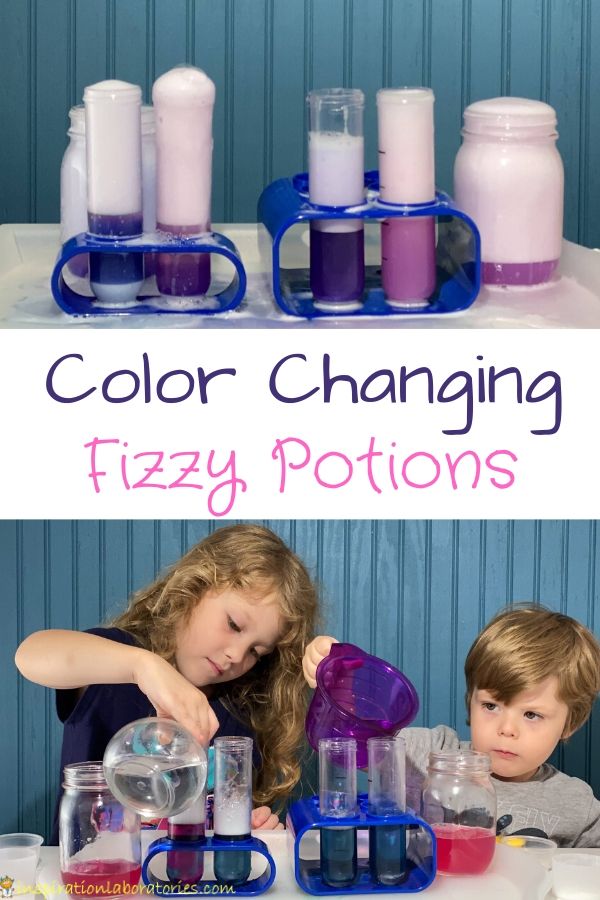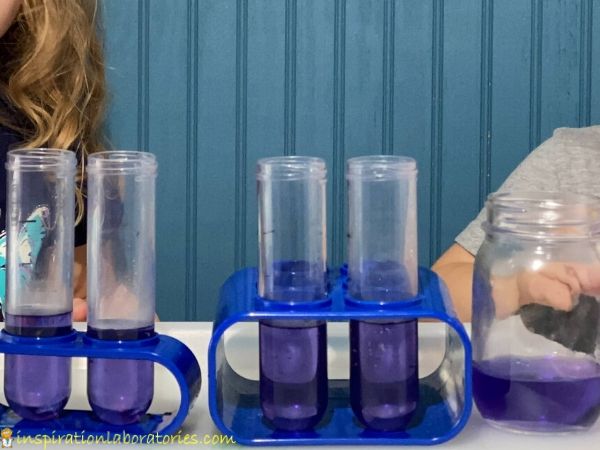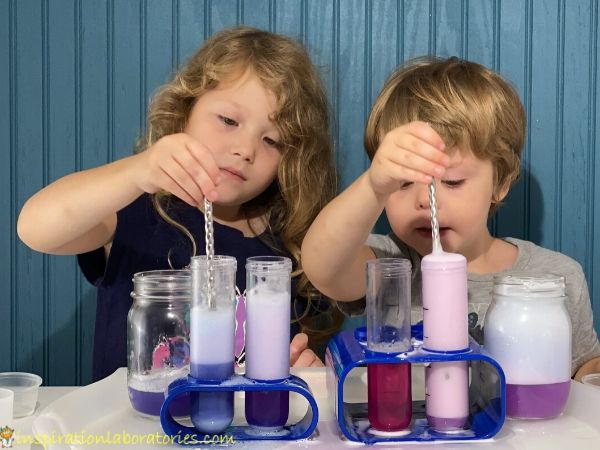Color Changing Fizzy Potions
Make color changing fizzy potions with a simple chemistry lesson. We’ll use a red cabbage juice indicator, dish soap, baking soda, and vinegar.

Color Changing Fizzy Potions
We’ve made fizzy potions that change color before in our Fizzy Potions Juice Lab. In that case, we used grape juice or cherry juice. It changed color based on how acidic or basic it was.
This time we’ll be using red cabbage juice as our acid/base indicator. Red cabbage juice has a pigment called anthocyanin that changes color depending on the pH of the solution it’s in.
The cabbage juice is purple with a neutral pH (like water).
The cabbage juice is blue or green with a base.
The cabbage juice is pink with an acid.
How to Make Red Cabbage Juice Indicator
Chop up some red cabbage. (You don’t really need much – maybe a cup.) Place the cabbage in a medium saucepan and cover with water.
Heat the cabbage until the water turns purple. Use a medium heat. The water shouldn’t need to boil.
Allow the mixture to cool. Strain the cabbage and reserve the liquid.
How to Make Color Changing Potions
Start with cabbage juice in a container.

We started with mason jars and test tubes. The test tubes, Erlenmeyer flask, and measuring cup were sent to us by Learning Resources a few years ago. They are perfect for little hands to use. Find them in the kits below. (I get commissions for purchases made through the affiliate links in this post.)
Add a bit of dish soap until you get a color change. Depending on the pH of your soap, the liquid will turn blue or green. You may need to stir to see the color change. (We used metal chopsticks as stirring rods.)

Pour vinegar into your container until you get a color change. Vinegar is an acid and will turn the solution pink.

Add baking soda to your container. If you add just a small amount of baking soda, you will neutralize the vinegar and bring the pH back to neutral. you’ll see the color change to purple.

Add a bit more baking soda and you’ll see the color change to blue.
When baking soda (sodium bicarbonate) and vinegar (acetic acid) combine, they react to form water, a salt (sodium acetate), and carbon dioxide gas. The bubbles produced by the reaction are the carbon dioxide gas escaping the water. Adding dish soap creates a foam as the the soap wraps around the escaping gas.
More Baking Soda Science Ideas
- Frozen Baking Soda Dragon Eggs
- Simple Baking Soda and Vinegar Explorations
- Try these 20 Baking Soda Science Activities.
Subscribe to the Inspiration Laboratories newsletter. Each issue has exclusive hands-on science explorations for children, a recap of our latest activities, and special resources selected just for you!

Leave a Reply